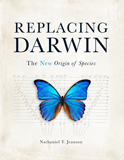Ten Evolutionary Fairytales
Responding to evolutionary propaganda
Earlier this year, the pop-sci website LiveScience published an article titled “How 10 Animals Evolved Their Iconic Features.” In the article, they presented brief summaries of a variety of iconic animal features, from turtle shells to tiger stripes. It is an eclectic list as some features are very broad, covering whole taxonomic groups like the order Testudines, and others are species specific like the tiger (Panthera tigris). As such, different mechanisms are invoked for each.
Turtle Shells
First on the list is the evolution of the turtle shell. It’s very interesting that LiveScience decided to lump all turtles together as there are distinct variants of shell, ranging from the massive domed shells of land tortoises to heavy-duty water shells of snapping turtles to sturdy shells of sea turtles to the leathery shells of softshell turtles. According to the LiveScience framing, “Paleontologists once believed that the shell was formed through the fusion of osteoderms—bony deposits that make up the protective scales on crocodiles and armadillos. But developmental biologists disagreed with this theory, given how the embryos of modern day turtles develop. Instead, they believed the ribs underneath turtle ancestors’ bodies fused and gradually united over the body to form the shell.”1 However, they argue that the problem has been resolved in favor of the developmental biologists by the finding of Odontochelys semitestacea. This Chinese fossil turtle is fairly well preserved and articulated, making it easy for developmental biologists to make their case, a case that the paper’s authors explicitly argue.2 Later papers make a similar and expanded argument using additional fossils.3
All we know is that dead turtles probably underwent the same developmental pattern as living ones. But that headline wouldn’t get clicks.
There is a legion of problems with this argument. The paper LiveScience relies on uses phylogenetic analysis to claim that Proganochelys is an ancestral turtle.4 There are lots of problems with phylogenetics. Probably the most glaring is that it assumes evolution occurred as its foundational assumption.5 Even leaving out the phylogenetics, the LiveScience article actually does not tell us anything about where the turtle shell comes from. Instead, it proposes an idea for how the shell developed from a primitive form to the forms we see today. You won’t realize it from reading the article because LiveScience skips over the fact that Proganochelys was found with an intact plastron (the bottom of a turtle shell).6 Further, the upper part of the body was degraded during fossilization. It is possible that the carapace (upper part of the shell) was torn off during fossilization. The widening of the ribs may also be an artifact of compression during fossilization, especially as some of the ribs are disarticulated slightly from the spine. The researchers even acknowledge that some of the vertebrae were “displaced laterally during fossilization.”7 Even if we give Proganochelys every benefit of the doubt, it is impossible to avoid the fact that half the shell is present. So even assuming the evolutionary narrative to be true (it isn’t), we still don’t know where the shell came from. All we know is that dead turtles probably underwent the same developmental pattern as living ones. But that headline wouldn’t get clicks.
Giraffe Necks
The next feature LiveScience tries to explain is the long neck of the giraffe. LiveScience argues that a giraffe’s relative used to butt heads with the winner getting access to mates. In a similar way, giraffes’ supposed ancestors fought more with their necks. “Males who won fights more often passed these genes onto their offspring than did the losers, eventually leading to the giraffes we see today.”8 The explanation they give may sound good, but let’s get a closer look.
Giraffes have an exquisite system for getting blood from their heart up their long necks and avoiding flooding their brain with blood when they bend down. Such a system is hardly necessary for the sheeplike ancestor that LiveScience claims. Worse still for the claim, the sheep-sized fossil Discokeryx xiezhi was incredibly incomplete, with a partial skull, a few vertebrae, and a partial jaw and teeth.9 Even the researchers’ own phylogenetic tree does not put Discokeryx on the same branch as modern giraffes! What that means is that they cannot, by the researchers’ own argument, be ancestral to modern giraffes. Further, modern giraffes do not engage in headbutting. Instead, they swing their heads like clubs when engaged in combat with other males.10 Worse still, female giraffes, which have long necks, do not compete. Evolutionary scientists still postulate everything from foraging to horizon scanning, including sexual selection, to explain giraffes’ long necks, acknowledging problems for all of them.11 So what does this sheeplike creature have to do with giraffes? Not much, other than to give a totally different example of male fighting behavior supposedly leading to totally different traits. It is a fairy tale for adults.
Elephant Tusks
According to LiveScience’s rendering, the elephants’ tusks give them a nebulous, undefined “evolutionary advantage when digging, lifting objects, stripping bark of [sic]trees and protecting themselves.”12 But does not tell us how the tusks came to be? It merely explains why they continued to exist once they arrived. Remember, as Dawkins said, “Natural selection, the blind, unconscious, automatic process which Darwin discovered, and which we now know is the explanation for the existence and apparently purposeful form of all life, has no purpose in mind. It has no mind and no mind’s eye. It does not plan for the future. It has no vision, no foresight, no sight at all.”13 Thus, natural selection cannot plan for what the tusk will do; it merely is a reaction to the benefit a trait provides once present.
LiveScience, however, does make a half-hearted attempt to explain tusks’ origins. They cite a paper that argues tusks formed as a result of a move away from constant tooth replacement and the development of permanent attachment points for the tusks.14 There are significant problems here too. Why was constant tooth replacement abandoned? How did stem elephants develop the necessary attachment points for the tusks? What “evolutionary advantage” did those attachment points provide before the tusks existed? Or if it is the other way around, how did the tusks stay attached to the elephant’s body without the attachment points? And what good were they at that point?
Blue Whales
The next on LiveScience’s list is the size of the blue whale. Of course, whale evolution from a much smaller land ancestor is assumed, despite being replete with problems. Even if we overlook those problems, the argument they provide is highly lacking. They cite a paper claiming blue whales achieved their massive size due to an increase in food availability in the ocean at the Miocene-Pliocene boundary.15 Even overlooking the inaccurate millions of years, the argument does not explain how having lots of food contributes to gigantism. Sure, having a lot of food allows an organism to reach gigantic proportions, but it does not create the ability to reach those sizes and leads primarily to obesity. While blue whales do have a significant amount of blubber, their blubber serves a purpose, and they have the body size necessary to distribute it. Excess food does not increase body length by default. Genetic factors would have to be considered.
Interestingly, other evolutionists have proposed contradictory explanations. One theory postulates that whale body size has to do with controlling heat loss in water rather than access to nutrients.16 Another more recent paper pushed back the origin of gigantism to the late Miocene.17 LiveScience ignored both of these salient papers. Further, their explanation does not tell us where whale gigantism came from, only conditions that might allow for such gigantism to persist if it exists.
Tiger Stripes
At number five on the list, we come to the tiger’s stripes. This one is remarkable because it is the first one where the mechanism might be possible. They cite a study arguing that a developmental system controls regularly spaced structures like teeth, stripes, and hair.18 This mechanism is certainly conceivable to explain the pattern of tiger stripes. What it does not explain is why tigers have stripes or how the mechanism to space them came into existence. It is a very cool mechanism that provides each tiger with its unique pattern, but it does not tell us anything about the evolution of tigers or cats more broadly. However, this is the closest we have come so far to being something other than a just-so story.
Hammerhead Shark
Next on the list comes the head of the hammerhead shark. They do not even have a good fairy tale for this one. “Few theories exist to explain the function of hammerheads’ unusual head shape and why it evolved this way.”19 They cite a paper that argues hammerheads have better binocular overlap in vision than normal sharks.20 Another article argues that the head increases maneuverability.21 A more recent article than the LiveScience article cited argues that head shape is selected for differently depending on habitat.22
Of course, what none of these articles tell us is where the head shape came from. A reminder that Dawkins tells us that evolution has no foresight. It cannot tell that remaking the shark’s head will give it advantages. Every modification that is made must have a stepwise benefit. Given that the bonnethead, the hammerhead species with one of the smallest heads, does not significantly differ from other sharks in vision, that can be ruled out as a benefit.23 Something else would have to be considered as providing that stepwise benefit. Until then, this is another just-so story.
Rattlesnakes
At number seven on the list, we find a rattlesnake’s rattle. Here the argument is a behavioral one. LiveScience cites a paper that argues that since many other snakes shake their tails when threatened, the rattle evolved as an extension of that behavior.24 According to LiveScience, “Snakes that shook their tails fastest may have developed callus at the end of their tails to serve as a better warning signal to predators, with this eventually leading to the creation of the rattle.”25 There are, as usual, significant problems with this idea. The first comes from the evolutionists themselves, who argue that there are significant changes to the basic snake body plan required to make a rattle, including a special structure at the end of the vertebrae.26 There are also special muscles that cause the rattle to work, designed to keep it rattling for as long as the snake needs it.27 The rattle could not have developed from a simple tail wriggling.
There would need to be a genetic, or at least an epigenetic change, to pass on that callous, and it would provide little to no selective benefit.
Even if we ignore all the evolutionists’ own objections to the LiveScience story, it still lacks very important details and reveals a lack of understanding of heredity. What benefit did a partial rattle provide? Further, how was this “callus” transmitted? If a man works with his hands and develops large calluses on his hands, his children are not born with calluses on their hands. This is very Lamarckian. There would need to be a genetic, or at least an epigenetic change, to pass on that callous, and it would provide little to no selective benefit.
Hummingbirds
Next up on the list is the hummingbird’s long bill. It’s interesting that the article chose to focus on this rather than the hummingbird’s ability to hover, which would be the obvious feature one notices about hummingbirds. Even more interesting, despite the headline proclaiming the article explains how 10 animals evolved their iconic features, the hummingbird section provides exactly one uncited sentence attempting to explain how the bills came to be. “As a result, hummingbird bills evolved to better feed on different flower species, and competition boosted diversity in bill length and shape.”28 Nothing in that sentence explains anything. In fact, it is a non sequitur for the sentence before it, which talks about hummingbirds liking nectar. How does hummingbirds liking nectar necessitate that they will diversify to feed on different species? It does not. It argues for just the opposite, namely that, having found a pleasant source of nectar, hummingbirds will stick to it. As an aside, hummingbirds taste sweet differently than most vertebrates.29
It turns out that hummingbird nectar feeding is much more complicated than this LiveScience article bothered to mention. The tip of a hummingbird’s bill has a special region that squeezes and twists the tongue, much as you might wring out a towel. This dislodges the nectar from the tongue and allows it to be ingested.30 The tongue is specially grooved to hold the nectar, allowing it to be dislodged more easily.31 Developing these and other related features is no small evolutionary feat, yet LiveScience completely glossed over their existence.
Lobster Claws
There is a subtle bait-and-switch with this one. Instead of explaining the origin of lobster claws, the article attempts to explain the left- and right-handedness of the claws. Lobster claws are not identical, with each one designed to perform a different function. And, as LiveScience helpfully points out, they have been this way since the early Triassic.32 What LiveScience does not say is where the claws came from.
It turns out they did not answer that question because the evolutionists themselves are very thin on explanations. Lobster claws are much more complex than most people realize. They have both fast- and slow-acting muscle fibers, which take up to two years to fully mature.33 The complex claws, used for defense and crushing prey, are completely unexplained in the literature, apart from the usual phylogenetic hand-waving.
Pelican Pouches
Number ten on the list (finally we’re almost done) is the beak pouch of the pelican. Here again, LiveScience admits to the absence of evidence: “How this handy tool evolved is a mystery.”34 They do go on to mention that this situation supposedly changed with the discovery of a pelican fossil in 2011. However, here is a direct quote from the abstract of that paper: “Morphologically identical to modern pelicans, the new fossil already shows several advanced features unique to extant species of the genus Pelecanus.”35 Note, the fossil looks identical to modern pelicans. That means it tells us nothing about where the pelican beak came from. It has stayed the same. Also, the abstract is always found at the very beginning of the paper. A casual reading just beyond the title of the paper should have dissauded much in the way of conclusions about the evolution of pelicans.
Near the end of the paper, they would have found this statement: “The remarkable stasis in the beak of the pelican remains intriguing, and is probably in need of new explanations.”36 If you need new explanations, your old ones must not be working. One paper spent two sentences on the pelican’s beak, arguing that their unique bills might be a result of evolution tweaking already successful beak shapes.37 Of course, this assumes that the tweaks are either beneficial or that evolution has foresight, which Dawkins has told us it does not. Therefore, the tweaks must be beneficial. However, that begs the question of why there has been an extended period of stasis. Why are tweaks not ongoing? If a previously optimized beak was tweaked to create the pelican beak, why is the pelican beak not also being tweaked? Beyond the two sentences mentioned, pelican beaks appear to be unexplained in the literature. So LiveScience is still peddling castles in the sky.
Having completed all 10 parts of the list, let’s take a second and look back. Other than the tiger stripes, none of these actually explain what they are purported to explain, and even the tiger stripes would need further explanation. The rest are mere fairy tales worthy of inclusion in Hans Christian Andersen, not a science news website.
Footnotes
- Elise Poore, “How 10 Animals Evolved Their Iconic Features,” Animals, LiveScience, January 6, 2024, https://www.livescience.com/animals/how-10-animals-evolved-their-iconic-features.
- Chun Li, Xiao-Chun Wu, Olivier Rieppel, Li-Ting Wang, and Li-Jun Zhao, “An Ancestral Turtle from the Late Triassic of Southwestern China,” Nature 456 (2008): 497–501, https://www.researchgate.net/profile/Xiao-Chun-Wu-2/publication/23501107_Ancestral_turtle_from_the_Late_Triassic_of_Southwestern_China/links/544660050cf22b3c14de1e16/Ancestral-turtle-from-the-Late-Triassic-of-Southwestern-China.pdf.
- Tyler R. Lyson, Gabe S. Bever, Torsten M. Scheyer, Allison Y. Hsiang, and Jacques A. Gauthier, “Evolutionary Origin of the Turtle Shell,” Current Biology 23, no. 12 (2013): 1113–1119, https://www.cell.com/current-biology/pdf/S0960-9822(13)00566-6.pdf.
- Li et al., “Ancestral Turtle from the Late Triassic.”
- Mark Ridley, Evolution and Classification (London: Longman Group Limited, 1986), 162.
- Li et al., “Ancestral Turtle from the Late Triassic.”
- Li et al., “Ancestral Turtle from the Late Triassic.”
- Poore, “How 10 Animals Evolved.”
- Shi-Qi Wang, Jie Ye, Chunxiao Li, Jin Meng, Loïc Costeur, Bastien Mennecart, Chi Zhang, Ji Zhang, Manuela Aiglstorfer, Yang Wang, Yan Wu, Wen-Yu Wu, and Tao Deng, “Sexual Selection Promotes Giraffoid Head-Neck Evolution and Ecological Adaptation,” Science 376, no. 6597 (June 2022): https://www.science.org/doi/10.1126/science.abl8316.
- Robert E. Simmons and Lue Scheepers, “Winning by a Neck: Sexual Selection in the Evolution of Giraffe,” The American Naturalist 148, no. 5 (November 1996): 771–786, http://www.miketaylor.org.uk/tmp/giraffes/Simmons_96_giraffe-sex.pdf.
- Edgar M. Williams, “Giraffe Stature and Neck Elongation: Vigilance as an Evolutionary Mechanism,” Biology, 5(3), 35, https://doi.org/10.3390/biology5030035.
- Poore, “How 10 Animals Evolved.”
- Richard Dawkins, The Blind Watchmaker (New York: W. W. Norton & Company, 1996), 5.
- M. R. Whitney, K. D. Angielczyk, B. R. Peecook, and C. A. Sidor, “The Evolution of the Synapsid Tusk: Insights from Dicynodont Therapsid Tusk Histology,” Proceedings of the Royal Society Series: Biological Sciences 288, no. 1961 (October 2021): https://royalsocietypublishing.org/doi/10.1098/rspb.2021.1670.
- Nicholas D. Pyenson and Geerat J. Vermeij, “The Rise of Ocean Giants: Maximum Body Size in Cenozoic Marine Mammals as an Indicator for Productivity in the Pacific and Atlantic Oceans,” Biology Letters 12, no. 7 (July 2016): https://royalsocietypublishing.org/doi/10.1098/rsbl.2016.0186.
- Aaron Clauset, “How Large Should Whales Be?” PLoS One 8, no. 1 (2013): https://journals.plos.org/plosone/article?id=10.1371/journal.pone.0053967.
- Felix G. Marx, Giovanni Bianucci, Alberto Collareta, Agata Di Stefano, Walter Landini, Caterina Morigi, and Angelo Varola, “Rise of the Titans: Baleen Whales Became Giants Earlier than Thought,” Biology Letters 15, no. 5 (May 2019): https://royalsocietypublishing.org/doi/full/10.1098/rsbl.2019.0175.
- Jeremy B. A. Green, Andrew D. Economou, Atsushi Ohazama, Thantrira Porntaveetus, Paul T. Sharpe, Shigeru Kondo, M. Albert Basson, Amel Gritli-Linde, and Martyn T. Cobourne, “Periodic Stripe Formation by a Turing Mechanism Operating at Growth Zones in the Mammalian Plate,” Nature Genetics 44, no. 3 (February 2012): 348–351, https://www.ncbi.nlm.nih.gov/pmc/articles/PMC3303118/.
- Poore, “How 10 Animals Evolved.”
- D. M. McComb, T. C. Tricas, and S. M. Kaijura, “Enhanced Visual Fields in Hammerhead Sharks,” Journal of Experimental Biology 212, no. 24 (December 2009): 4010–4018, https://journals.biologists.com/jeb/article/212/24/4010/9615/Enhanced-visual-fields-in-hammerhead-sharks.
- Stephen M. Kajiura and Kim N. Holland, “Electroreception in Juvenile Scalloped Hammerhead and Sandbar Sharks,” Journal of Experimental Biology 205, no. 23 (December 2002): 3609–3621, https://journals.biologists.com/jeb/article/205/23/3609/9206/Electroreception-in-juvenile-scalloped-hammerhead?searchresult=1.
- Sam Johnson, “Evolutionary Pressures Exerted on the Hammerhead Shark Cranium: The Advantages of Varying Cephalofoil Sizes Based on Habitat,” Royal Road 6 (2022): 125–140, https://utampa.dspacedirect.org/server/api/core/bitstreams/38d8f8a3-cfd4-4720-bb9a-a8337c45e51f/content.
- McComb et al., “Enhanced Visual Fields.”
- David W. Pfennig, Bradley C. Allf, and Paul A. P. Durst, “Behavioral Plasticity and the Origins of Novelty: The Evolution of the Rattlesnake Rattle,” The American Naturalist 188, no. 4 (October 2016): https://www.researchgate.net/profile/Bradley-Allf/publication/305720035_Behavioral_Plasticity_and_the_Origins_of_Novelty_The_Evolution_of_the_Rattlesnake_Rattle/links/5f831dcea6fdccfd7b582202/Behavioral-Plasticity-and-the-Origins-of-Novelty-The-Evolution-of-the-Rattlesnake-Rattle.pdf.
- Poore, “How 10 Animals Evolved.”
- André Pires-da Silva and Jesse M. Meik, “Evolutionary Morphology of the Rattlesnake Style,” BMC Evolutionary Biology 9 (2009): https://bmcecolevol.biomedcentral.com/articles/10.1186/1471-2148-9-35.
- Brad R. Moon, “Muscle Physiology and the Evolution of the Rattling System in Rattlesnakes,” Journal of Herpetology 35, no. 3 (September 2001): 497–500, https://doi.org/10.2307/1565969.
- Poore, “How 10 Animals Evolved.”
- Maude W. Baldwin, Yasuka Toda, Tomoya Nakagita, Mary J. O’Connell, Kirk C. Klasing, Scott V. Edwards, and Stephen D. Liberles, “Evolution of Sweet Taste Perception in Hummingbirds by Transformation of the Ancestral Umami Receptor,” Science 345, no. 6199 (August 2014): 929–933, https://www.science.org/doi/10.1126/science.1255097.
- Margaret A. Rubega and Alejandro Rico-Guevara, “Functional Morphology of Hummingbird Bill Tips: Their Function as Tongue Wringers,” Zoology 123 (August 2017): 1–10, https://www.sciencedirect.com/science/article/abs/pii/S0944200617301460.
- Paul W. Ewald and William A. Williams, “Function of the Bill and Tongue in Nectar Uptake by Hummingbirds,” The Auk 99, no. 3 (July 1982): 573–576, https://sora.unm.edu/sites/default/files/journals/auk/v099n03/p0573-p0576.pdf.
- Poore, “How 10 Animals Evolved.”
- Scott Medler, Travis R. Lilley, Jocelyn H. Riehl, Eva P. Mulder, Ernest S. Chang, and Donald L. Mykles, “Myofibrillar Gene Expression in Differentiating Lobster Claw Muscles,” JEZ-A: Ecological and Integrative Physiology 307A, no. 5 (April 2007): 281–295, https://onlinelibrary.wiley.com/doi/abs/10.1002/jez.375.
- Poore, “How 10 Animals Evolved.”
- Julie Carrier, Antoine Louchart, and Nicolas Tourment, “The Earliest Known Pelican Reveals 30 Million Years of Evolutionary Stasis in Beak Morphology,” Journal of Ornithology 152, no. 1 (May 2011): 15–20, https://www.researchgate.net/publication/225597785_The_earliest_known_pelican_reveals_30_million_years_of_evolutionary_stasis_in_beak_morphology.
- Carrier, Louchart, Tourment, “Earliest Known Pelican Reveals.”
- Ryan N. Felice, Joseph A. Tobias, Alex L. Pigot, and Anjali Goswami, “Dietary Niche and the Evolution of Cranial Morphology in Birds,” Proceedings of the Royal Society B: Biological Sciences 286, no. 1897 (February 2019): https://royalsocietypublishing.org/doi/full/10.1098/rspb.2018.2677.
Recommended Resources

Answers in Genesis is an apologetics ministry, dedicated to helping Christians defend their faith and proclaim the good news of Jesus Christ.
- Customer Service 800.778.3390
- © 2024 Answers in Genesis







